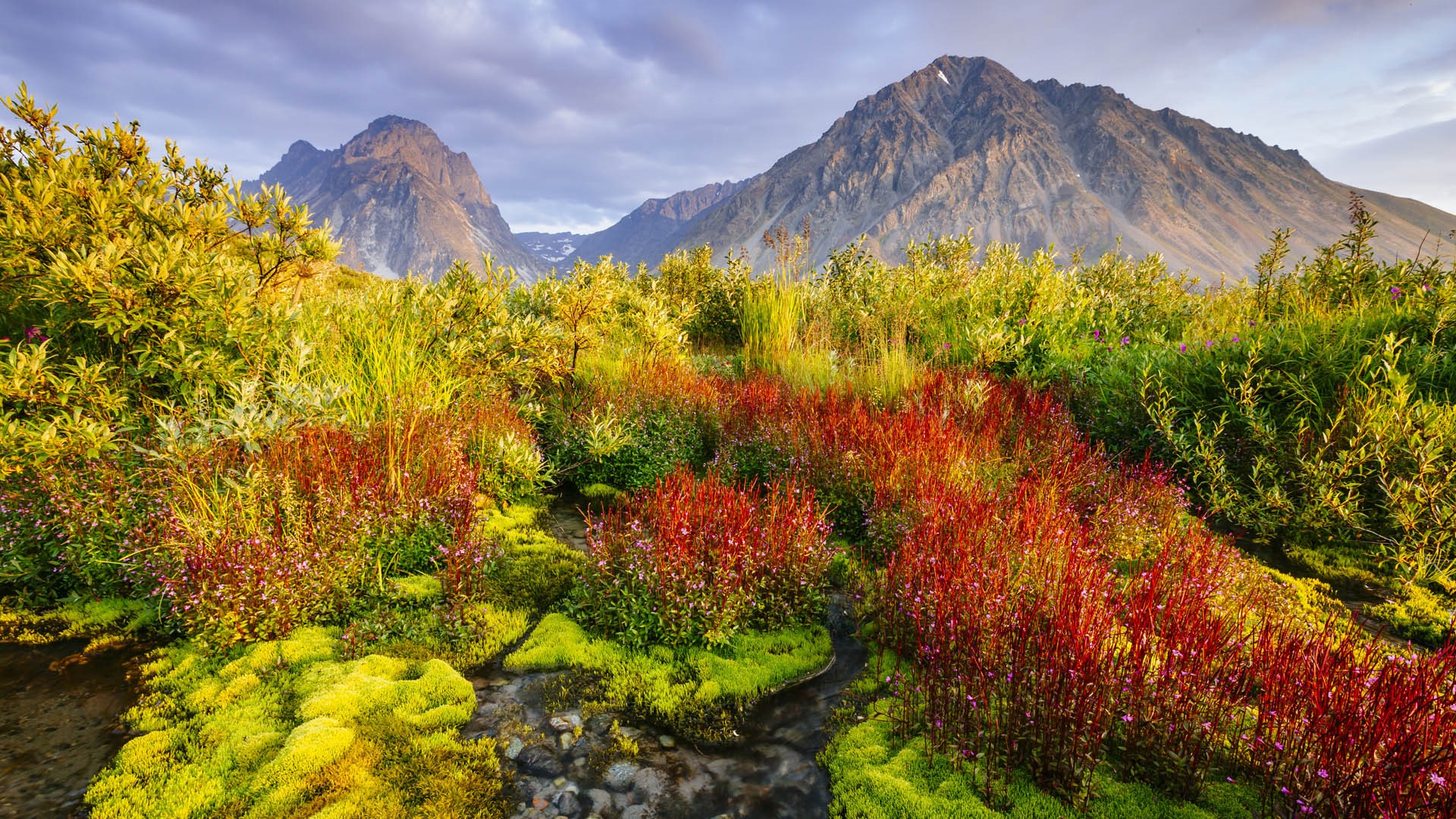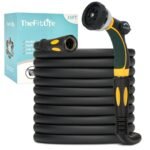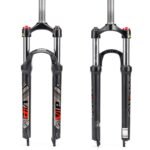Lake Clark National Park in Alaska is a destination for those who seek adventure and want to immerse themselves in wilderness. It is a remote and scenic park that offers a unique experience for visitors. The park is located in the heart of the Chigmit Mountains, where the Alaska and Aleutian mountain ranges meet. It boasts great ecological diversity, including volcanoes, turquoise lakes, glaciers, granite spires, and thundering waterfalls.
US National Park article featuring all the parks
Visiting Lake Clark National Park requires some planning, as it is a backcountry park with limited accessibility. Visitors should be prepared for a true wilderness experience and follow backcountry tips to ensure their safety. Permits and reservations are required for some activities, so it is important to plan ahead. The park has limited operating hours and is only open during certain seasons, so it is important to check the park’s website for current information.
Getting to Lake Clark National Park can be a bit of a challenge, as there is no road access to the park. The park can be reached by air transport from Anchorage or other nearby communities. Lodging options are limited, but visitors can stay at lodges, cabins, or campsites within the park. Despite the challenges, those who make the journey to Lake Clark National Park are rewarded with a unique and unforgettable experience.
Geography
Lake Clark National Park and Preserve is situated in the southern part of Alaska, covering an area of 4,030,015 acres. This vast park is home to a wide range of geographical features, including mountains, volcanoes, lakes, rivers, and a coastline.
Mountains and Volcanoes
The park is situated at the base of the Alaska Peninsula, where the Alaska and Aleutian ranges meet. The Chigmit Mountains, which are a part of the Aleutian Range, are located within the park. These mountains are home to several active volcanoes, including Mount Redoubt, which last erupted in 2009.
Lakes and Rivers
Lake Clark is the largest lake in the park, stretching over 40 miles. It is situated in the Chigmit Mountains and is the headwaters for the most important spawning ground for sockeye salmon in North America. The park is also home to several other glacial lakes, including Twin Lakes and Telaquana Lake.
The park is home to several rivers, including the Mulchatna River, which is one of the most important salmon spawning rivers in Alaska. It is also home to the Tlikakila River, which is known for its excellent trout fishing.
Coastline
The coastline of Lake Clark National Park and Preserve is rugged and wild, with cliffs and rocky beaches. It is home to a wide range of wildlife, including sea otters, seals, and whales. The park is also home to several small islands, including Chisik Island and Crescent Island.
Overall, Lake Clark National Park and Preserve is a stunning example of Alaska’s natural beauty, with a diverse range of geographical features that make it a must-visit destination for nature lovers and outdoor enthusiasts alike.
Wildlife
Lake Clark National Park is home to a diverse range of wildlife species, making it an excellent destination for nature lovers and wildlife enthusiasts. Here are some of the most notable wildlife species that you can see in the park:
Bears
Lake Clark National Park is home to both black and brown bears. The park is one of the best places in Alaska to view these magnificent creatures in their natural habitat. Brown bears are the largest and most powerful terrestrial predators in the park, and visitors can view them from a safe distance at designated viewing areas. Black bears are smaller and less aggressive than brown bears, but they are still wild animals and should be treated with caution.
Salmon
Lake Clark National Park is home to five species of salmon: Chinook, coho, sockeye, pink, and chum. Visitors can watch these fish swim upstream to spawn in the park’s rivers and streams. The park’s salmon populations are an essential food source for many of the park’s wildlife species, including bears, eagles, and wolves.
Caribou and Moose
Caribou and moose are two of the largest mammal species found in Lake Clark National Park. Moose are more common in the park’s wetlands, while caribou are more commonly found in the park’s uplands. Visitors can view these majestic animals from a safe distance at designated viewing areas.
Wolves and Other Wildlife
Wolves are one of the most elusive and fascinating wildlife species found in Lake Clark National Park. Visitors can hear their haunting howls echo through the park’s wilderness at night. Other wildlife species found in the park include foxes, lynx, wolverines, and beavers. Visitors can view these animals from a safe distance at designated viewing areas.
Birding
Lake Clark National Park is a paradise for birdwatchers, with over 200 bird species found in the park. Visitors can observe bald eagles, peregrine falcons, and other raptors soaring through the park’s skies. The park is also home to a diverse range of waterfowl, songbirds, and shorebirds.
In conclusion, Lake Clark National Park is a haven for wildlife enthusiasts, offering visitors a chance to view some of Alaska’s most iconic wildlife species in their natural habitat. Visitors should always remember to respect the park’s wildlife and view them from a safe distance.
Activities
Lake Clark National Park offers a wide range of activities for visitors of all ages and interests. Here are some of the most popular ones:
Hiking and Backpacking
The park offers outstanding tundra hiking with both base-camping and point-to-point backpacking trip options. From easy day hikes to challenging multi-day treks, there are trails for every level of hiker. Some of the most popular hikes include the Tanalian Falls Trail, the Twin Lakes Trail, and the Turquoise Lake Trail. Visitors can also hike to Dick Proenneke’s historic cabin on upper Twin Lake.
Fishing
Lake Clark is home to five species of Pacific salmon, including sockeye, coho, and chinook, as well as rainbow trout, arctic grayling, and Dolly Varden. Fishing is allowed year-round in the park, but regulations vary depending on the species and location. Visitors must have a valid Alaska fishing license and follow catch-and-release guidelines for some species.
Bear Viewing
Bear viewing is one of the park’s most popular activities. Lake Clark is home to both brown bears and black bears, and visitors can observe them in their natural habitat from a safe distance. Some of the best places to view bears include Silver Salmon Creek, Chinitna Bay, and the coastal areas of the park. Visitors should always follow bear safety guidelines and respect the bears’ space.
Kayaking and Rafting
Kayaking and rafting are great ways to explore the park’s waterways and coastline. Visitors can paddle on turquoise lakes, float down wild rivers, and navigate through fjords and bays. Some of the most popular kayaking and rafting destinations include Tuxedni Bay, Crescent Lake, and the Chilikadrotna River. Visitors should be aware of the weather and tides and bring appropriate gear.
Camping and Lodging
The park offers a variety of camping and lodging options for visitors. There are several campgrounds in the park, including the Tanalian Campground, the Redoubt Bay Lodge Campground, and the Silver Salmon Creek Campground. Visitors can also stay at lodges and cabins, such as the Redoubt Mountain Lodge and the Lake Clark Wilderness Lodge. Reservations are recommended for all accommodations.
In conclusion, Lake Clark National Park offers a diverse range of activities for visitors to enjoy. Whether you prefer hiking, fishing, bear viewing, kayaking, rafting, camping, or lodging, there is something for everyone in this beautiful park.
Culture and History
Lake Clark National Park and Preserve is a place of rich culture and history. From the local people to the historic places, this park has a unique story to tell.
Local People
The park is home to several native groups, including the Dena’ina Athabascan and Alutiiq people. These groups have lived in the area for thousands of years and have a deep connection to the land. Visitors to the park can learn about their traditions, including subsistence hunting and fishing, through cultural demonstrations and exhibits.
Dick Proenneke and His Cabin
One of the most famous residents of the park was Dick Proenneke, who built a cabin by hand and lived there for over 30 years. The cabin, which is now a National Historic Site, is a testament to Proenneke’s self-sufficiency and love of the wilderness. Visitors can see the cabin and learn about Proenneke’s life through interpretive programs.
Historic Places
In addition to the Proenneke cabin, the park is home to several other historic places. The Tanalian Falls Fish Hatchery, for example, was built in the 1930s and was the first fish hatchery in Alaska. Visitors can learn about the hatchery’s history and its role in the state’s salmon industry.
Another historic place is the Russian Orthodox Church in Nondalton, which was built in the early 1900s and is still in use today. The church is a beautiful example of Russian Orthodox architecture and is an important part of the local community.
Overall, Lake Clark National Park and Preserve is a place of rich culture and history. Visitors can learn about the people who have lived in the area for thousands of years, as well as the more recent residents who have made their mark on the park’s history.
Frequently Asked Questions
What is the history of Lake Clark National Park?
Lake Clark National Park was established in 1980 under the Alaska National Interest Lands Conservation Act. The park is named after Lake Clark, which is the centerpiece of the park. The area has a rich history of human habitation and use, dating back over 10,000 years. The park is home to several Native Alaskan communities, including the Dena’ina Athabascan people.
How can I find lodging near Lake Clark National Park?
There are several options for lodging near Lake Clark National Park, including lodges, cabins, and campsites. The park has several lodges and cabins available for rent, as well as campsites and backcountry camping areas. Visitors can also find lodging in nearby towns, such as Port Alsworth and Anchorage.
How large is Lake Clark National Park?
Lake Clark National Park covers over 4 million acres of land, including mountains, glaciers, lakes, and rivers. The park is located in southwestern Alaska, and is one of the largest national parks in the United States.
When did Lake Clark become a national park?
Lake Clark National Park was established in 1980, as part of the Alaska National Interest Lands Conservation Act. The park was created to preserve the area’s unique natural and cultural resources, and to provide opportunities for outdoor recreation and education.
What is the cheapest way to travel to Lake Clark National Park?
The cheapest way to travel to Lake Clark National Park is by car or by bus. Visitors can drive to the park from Anchorage, which is approximately 150 miles away. Alternatively, visitors can take a bus or shuttle from Anchorage to the nearby town of Port Alsworth, which is located within the park.
What kind of animals can be found at Lake Clark National Park?
Lake Clark National Park is home to a wide variety of wildlife, including brown bears, black bears, moose, caribou, wolves, and Dall sheep. The park is also home to a variety of bird species, including bald eagles, peregrine falcons, and sandhill cranes. Visitors should exercise caution and follow park guidelines when encountering wildlife.

Meet Kevin Goodell, your outdoor adventure coach! With a passion for nature ignited in childhood, Kevin brings a wealth of experience and expertise to simplify tough outdoor skills. As a U.S. Army veteran and former Sergeant, he has honed his leadership and teamwork abilities while developing a deep love for the great outdoors.
Kevin’s dedication to outdoor activities spans biking, birdwatching, national park trips, and archery/golf. With his friendly and approachable demeanor, he is committed to guiding individuals of all ages and skill levels towards unforgettable outdoor experiences.
Harnessing his extensive knowledge and personal achievements, Kevin is your go-to resource for learning and enjoying various outdoor pursuits. Whether you seek thrilling adventures or serene nature escapes, Kevin’s professional yet friendly approach will ensure an engaging and informative experience. Embark on your next outdoor adventure with Kevin Goodell and embrace the beauty of nature like never before.






